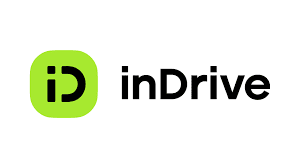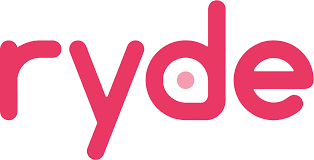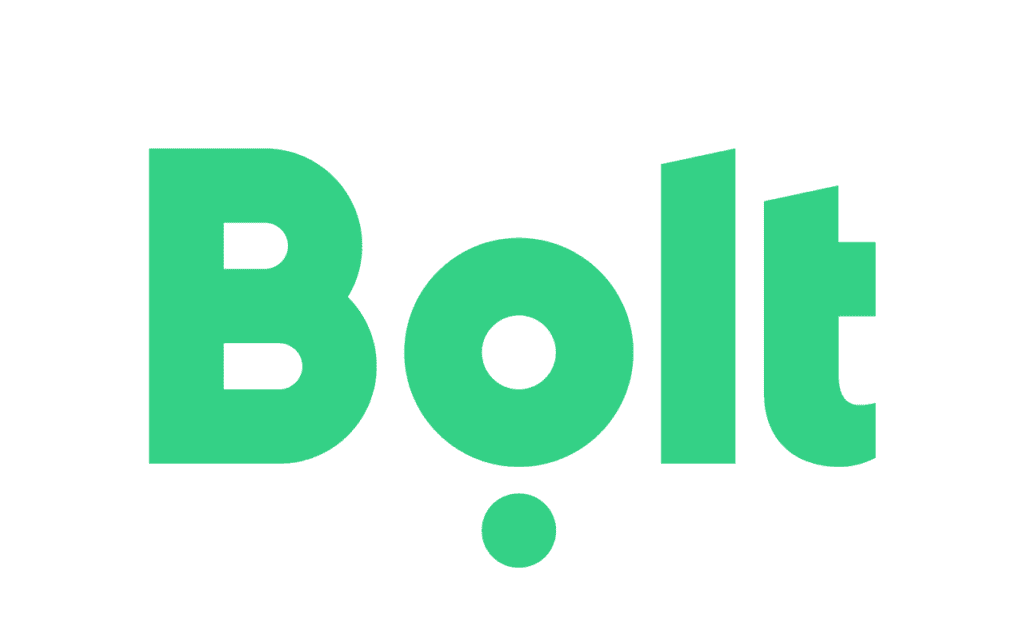Overview of Ride-Hailing Market in Malaysia
The ride-hailing market in Malaysia has experienced significant growth over the past decade, becoming a key part of the country’s transportation system.

In 2025, the ride-hailing industry shows no signs of slowing down, and in this article we bring to you various industry insights to satisfy your marketing, sales, and general curiosity needs.
Let’s begin.
11 Leading Ride-Hailing Apps
Here are the top e-hailing apps in Malaysia for 2025:
1. Grab

Launched in 2012, Grab is a dominant force in Southeast Asia, offering a comprehensive platform for ride-hailing, food delivery, and digital payments. With 2.9 million drivers, it operates extensively in major cities like Kuala Lumpur and Kota Kinabalu, making it a go-to choice for many users.
2. inDrive

inDrive allows passengers to negotiate their ride fares by placing bids, catering to cost-conscious users. This unique model fosters transparency and flexibility, making it an appealing option for those looking for budget-friendly travel. The app also features real-time tracking and multiple payment options for added convenience.
3. Maxim

Maxim focuses on providing reliable and affordable rides, emphasizing safety and a user-friendly experience. With its commitment to quality service, Maxim is particularly ideal for daily commuters seeking dependable transportation without breaking the bank.
4. AirAsia Move

Integrated with AirAsia’s extensive travel services, AirAsia Move offers seamless airport transfers and other travel-centric solutions. Targeting frequent travelers and budget-conscious users, this app makes it easy to coordinate flights and rides within a single platform.
5. RYDE

RYDE stands out by offering a multi-mode transportation service that includes carpooling, private rentals, and taxi services. The app emphasizes user-driver interactions and high trust ratings, ensuring a reliable experience complemented by real-time tracking and easy navigation.
6. EzCab

EzCab is an affordable e-hailing option that prioritizes professionalism and safety for its drivers. With features like GPS tracking, estimated fares, and multiple payment methods, EzCab appeals to users seeking a straightforward and secure ride-booking experience.
7. MyCar

As a local player, MyCar boasts 66,000 registered drivers and serves over 1.2 million customers, primarily in the Klang Valley. Handling around 15,000 rides daily, MyCar has quickly become a favorite for users looking for a reliable e-hailing service with a strong local presence.
8. Riding Pink

Riding Pink is Malaysia’s first women-only ride service, designed to enhance safety for women passengers and provide flexible earning opportunities for women drivers. Popular in Klang Valley, this app caters specifically to female users, fostering a supportive and secure transport environment.
9. Kumpool

Kumpool promotes shared rides as a cost-effective and environmentally friendly transportation option. By connecting users with similar routes and time preferences, Kumpool makes commuting budget-friendly while minimizing traffic congestion and reducing carbon footprints.
10. GOJO

GOJO offers a diverse range of vehicles, including luxury, eco-friendly, and specialized options such as wheelchair-accessible cars. With a focus on passenger comfort, sustainability, and efficient service, GOJO aims to provide a premium e-hailing experience that meets various needs.
These apps provide a wide range of services tailored to various user needs, making Malaysia’s ride-hailing market diverse and highly competitive.
11. Bolt

The European ride-hailing app Bolt is the most recent entrant in Malaysia, offering cheaper fares than Grab, including an introductory 50% discount for the first seven rides (capped at RM15).
While its affordability is appealing, the app faces significant challenges, including difficulty booking rides due to limited driver availability and glitches in both the user interface and payment system.
E-Hailing User Demographics and Preferences in Malaysia
A 2021 study by Universiti Tun Hussein Onn Malaysia entitled Profiling of Passengers by E-Hailing Services in Malaysia highlighted key demographics and factors influencing the use of e-hailing services.

Based on the study, most users are Malaysians aged 18-28 with 93% of them identifying as Malay.
Notably, students made up 59.8% of total respondents.
In terms of transportation preferences, 97.4% of the respondents favored e-hailing services for trips under 50 km, indicating a clear preference over traditional taxis. The survey data, analyzed using SPSS, identified several key factors driving the popularity of e-hailing services:
- Convenience: Ranked as the highest influencing factor, users appreciate the quick and efficient nature of e-hailing apps for short-distance travel.
- Ease of Use: The user-friendly interface of ride-hailing apps, with minimal steps to book a ride, plays a critical role in attracting users.
- Trialability: The ability to easily try out different services without long-term commitment also appealed to users.
- Social Influence: Media, family, and friends play a significant role in shaping user behavior, with many users adopting e-hailing services based on recommendations.
- Safety: Features like real-time tracking, booking transparency, and the ability to share ride details with others are highly valued by users, contributing to their sense of security.
- Reliability: A strong correlation was found between the ease of use and overall user satisfaction, emphasizing the importance of a seamless experience.
Overall, the survey reflects a tech-savvy, young demographic that values efficiency, safety, and ease of use, making e-hailing services the preferred choice for short trips in urban Malaysia.
E-Hailing Usage Patterns and Peak Times in Malaysia
In Malaysia, ride-hailing services peak during morning (7:00-9:00 AM) and evening (5:00-8:00 PM) rush hours, as commuters heavily rely on e-hailing for work travel.
Last year, Grab Malaysia revised its fare in consideration of drivers’ time in peak hour traffic.

As of January 16, 2023, Grab’s fare per minute in the Klang Valley increased from 20 to 43 sen, while the fare per kilometer decreased from 70 to 25 sen.
The base fare and minimum rates remain unchanged at RM2 and RM5, respectively.
Key Points:
- Grab fare is now more focused on ride time rather than distance.
- Example: A 10 km ride taking 30 minutes costs RM18; a faster 15-minute ride costs RM11.
- Peak hours are 7 a.m. to 9 a.m. and 5 p.m. to 8 p.m.
- Some drivers, represented by the Grab Drivers Malaysia Association, expect a 30% reduction in earnings due to the reduced distance rate.
Impact of E-Hailing on Traditional Taxi Services
Naturally, the e-hailing industry has been extremely disruptive for the traditional taxi service, as shown from a 2024 news article on Paul Tan.
Here is a summary of the article:
- Decline in Taxi Numbers: Approximately 30,000 taxis have been abandoned in Malaysia, leaving only 40,000 operational, down from 120,000 before the rise of ride-hailing services like Grab.
- Fare Disparity: The Gabungan Teksi Malaysia (GTSM) cites the significant difference between taxi fares and lower ride-hailing rates as a primary reason for the decline.
- Government Accountability: GTSM chairman Kamarudin Hussain criticizes the government for failing to regulate ride-hailing fares, resulting in consumers opting for more affordable options.
- Impact on Taxi Drivers: The shift to ride-hailing has left traditional taxi drivers struggling to earn a living due to decreased demand.
- Concerns for Ride-Hailing Drivers: Kamarudin also notes that low ride-hailing fares negatively affect the earnings of ride-hailing drivers.
- Call for Regulation: He proposes enforcing the 2010 Land Public Transport Act to establish a minimum fare for ride-hailing services, ensuring fair competition with traditional taxis.
2025 Update: Could Bolt Break Grab’s Stranglehold?
In a November 2024 press statement, Bolt announced its entrance into the Malaysian ride-hailing market, marking its expansion into the 46th country.

The company confirmed its operations in the Klang Valley after receiving an e-hailing license from Malaysia’s land public transport agency in August 2024, signaling its ambitions to challenge Grab’s dominance.
New App Teething Problems
In a review by Vulcan Post, the writer cited difficulties in booking rides with Bolt due to a lack of drivers or unaccepted trips and glitches in the app.

Additionally, drivers complained of a poorly optimized interface for managing bookings.
These operational and tech inefficiencies are quite similar to issues Grab faced during its early days, and is a nromal part of any app development lifecycle.
Whether or not Bolt will disrupt the near monopoly Grab has enjoyed remains to be seen, but they certainly have the resources and experience to give the latter a run for its venture capital funding.
7 Future Trends and Projections
Based on the above sections and after looking at the opinions of several thought leaders in the industry and business in general, we make the following seven predictions about e-hailing in Malaysia:
1. Driver Exodus
The ongoing price wars will likely continue to drive many drivers out of the e-hailing sector. As more drivers leave, the industry may face significant shortages, leading to longer wait times for passengers and potential fare increases as companies struggle to meet demand.
2. Shift in Driver Preferences
More drivers may turn to platforms that offer flexible pricing models, such as InDrive, which allows for fare negotiation. This shift could encourage competition among e-hailing services to adapt their fare structures to retain drivers.
3. Increased Regulatory Scrutiny
As the plight of drivers gains attention, there may be increased calls for government intervention to regulate fare structures and ensure fair compensation. This could lead to the establishment of minimum fare standards across the industry.
4. Enhanced Driver Support Programs
E-hailing companies may implement new support programs aimed at improving driver earnings and working conditions, such as benefits for fuel and maintenance costs, to combat the current dissatisfaction and driver turnover.
5. Technological Innovations
Companies may invest in technology to improve operational efficiency and reduce costs, such as implementing advanced algorithms for demand prediction and dynamic pricing. This could help balance fare competitiveness with driver compensation.
6. Consumer Awareness and Expectations
As awareness of drivers’ struggles grows, consumers may begin to value fair compensation for drivers over the lowest possible fares, leading to a shift in public sentiment and possibly greater acceptance of moderate fare increases.
7. Partnerships and Collaborations
E-hailing companies might explore partnerships with other industries (e.g., fuel providers, maintenance services) to create packages that help reduce operational costs for drivers, thus improving their overall financial viability.
Conclusion & Sources
In summary, low e-hailing fares currently benefit passengers but are unsustainable for drivers.

This will inevitably lead to significant changes in the industry, including regulatory interventions, shifts in driver preferences, and a reevaluation of fare structures.
Our sources in compiling this article:
- Lim, A. (2024, February 6). 30,000 taxis abandoned in Malaysia because of Grab – gov’t should control ride-hailing fares, say cab drivers. Paul Tan’s Automotive News. https://paultan.org/2024/02/05/30000-taxis-lie-abandoned-across-the-country-report/
- Grab Revises Fare Structure, Rides During Peak Hours To Cost More | Carz Automedia Malaysia. (n.d.). Carz Automedia Malaysia. https://www.carz.com.my/2023/01/grab-revises-fare-structure-rides-during-peak-hours-to-cost-more
- Yong, Y. (2024, July 1). Ride-share app inDrive projects its ride-hailing drivers in Malaysia to double by year-end – report. TNGlobal. https://technode.global/2024/07/01/us-based-ride-share-app-indrive-projects-its-ride-hailing-drivers-in-malaysia-to-double-by-year-end-report/
- UiTM. (n.d.). Profiling of Passengers by E-Hailing Services in Malaysia. UiTM.
Hey there stranger, thanks for reading all the way to the end. Consider joining our mailing list for a one-stop resource on everything from micro SaaS validation all the way to execution and promotion. Get a nifty list of questions to ask app developers when you sign up!
Download this template now so you know exactly what to ask App Development Agencies! Let us know where should we send it through the form below.








